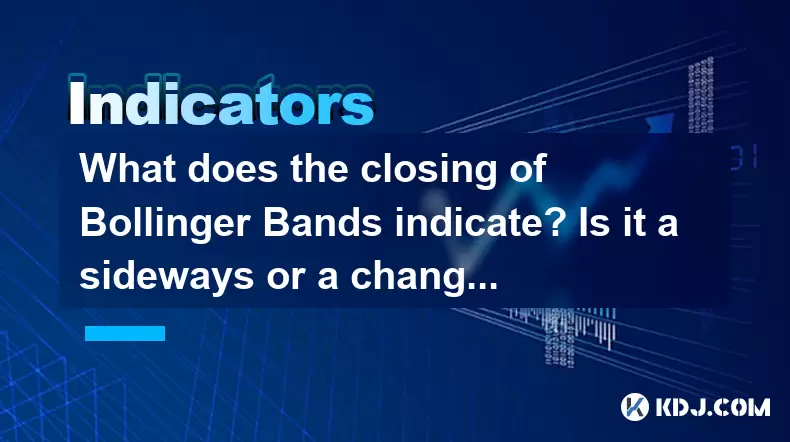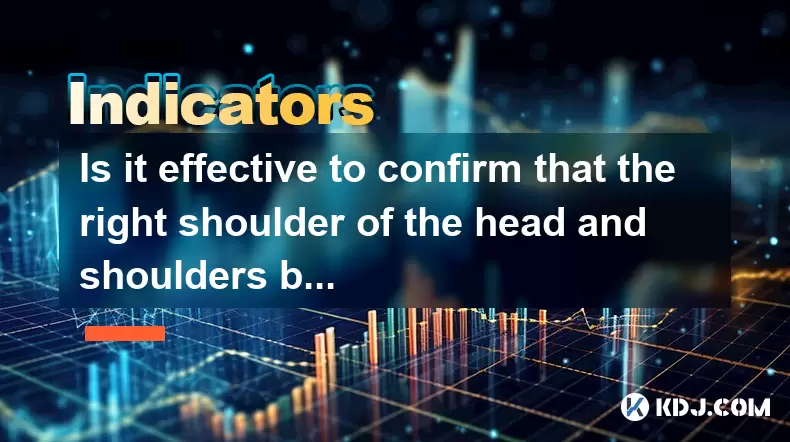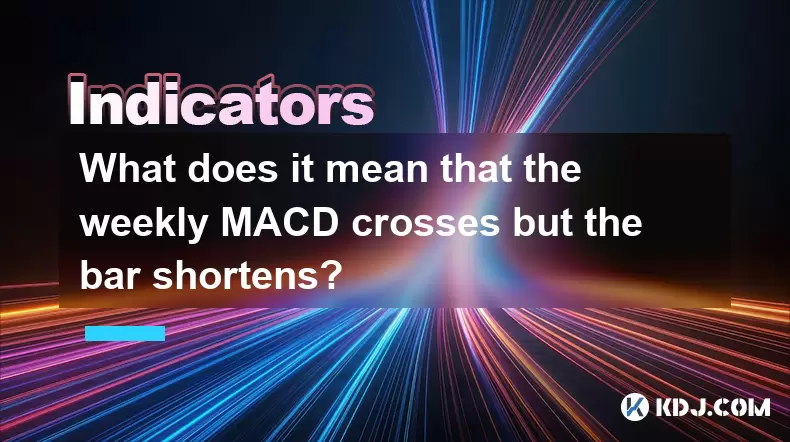-
 Bitcoin
Bitcoin $106,754.6083
1.33% -
 Ethereum
Ethereum $2,625.8249
3.80% -
 Tether USDt
Tether USDt $1.0001
-0.03% -
 XRP
XRP $2.1891
1.67% -
 BNB
BNB $654.5220
0.66% -
 Solana
Solana $156.9428
7.28% -
 USDC
USDC $0.9998
0.00% -
 Dogecoin
Dogecoin $0.1780
1.14% -
 TRON
TRON $0.2706
-0.16% -
 Cardano
Cardano $0.6470
2.77% -
 Hyperliquid
Hyperliquid $44.6467
10.24% -
 Sui
Sui $3.1128
3.86% -
 Bitcoin Cash
Bitcoin Cash $455.7646
3.00% -
 Chainlink
Chainlink $13.6858
4.08% -
 UNUS SED LEO
UNUS SED LEO $9.2682
0.21% -
 Avalanche
Avalanche $19.7433
3.79% -
 Stellar
Stellar $0.2616
1.64% -
 Toncoin
Toncoin $3.0222
2.19% -
 Shiba Inu
Shiba Inu $0.0...01220
1.49% -
 Hedera
Hedera $0.1580
2.75% -
 Litecoin
Litecoin $87.4964
2.29% -
 Polkadot
Polkadot $3.8958
3.05% -
 Ethena USDe
Ethena USDe $1.0000
-0.04% -
 Monero
Monero $317.2263
0.26% -
 Bitget Token
Bitget Token $4.5985
1.68% -
 Dai
Dai $0.9999
0.00% -
 Pepe
Pepe $0.0...01140
2.44% -
 Uniswap
Uniswap $7.6065
5.29% -
 Pi
Pi $0.6042
-2.00% -
 Aave
Aave $289.6343
6.02%
What does the closing of Bollinger Bands indicate? Is it a sideways or a change signal?
When Bollinger Bands narrow in crypto trading, it signals low volatility and often precedes a strong breakout, indicating a potential trend change or continuation.
Jun 17, 2025 at 07:00 am

Understanding Bollinger Bands in Cryptocurrency Trading
Bollinger Bands, a popular technical analysis tool, are widely used by cryptocurrency traders to assess market conditions. They consist of a moving average (typically 20-period) and two standard deviation lines plotted above and below it. These bands dynamically expand and contract based on price volatility.
In the volatile world of cryptocurrencies like Bitcoin, Ethereum, or Solana, understanding the behavior of Bollinger Bands is crucial. Traders often look for patterns such as band contraction or expansion to make informed decisions about potential price movements.
Bollinger Bands help identify overbought and oversold conditions, but their closing or narrowing requires deeper interpretation.
What Does It Mean When Bollinger Bands Close?
When Bollinger Bands appear to "close" or narrow significantly, this indicates a period of low volatility. This phenomenon is often referred to as a "squeeze."
During a squeeze:
- The distance between the upper and lower bands becomes minimal.
- Price action consolidates within a tight range.
- Market participants are waiting for a breakout signal.
This situation is common in crypto markets when there’s no clear trend, and trading volume drops. For instance, during a sideways movement phase, Bollinger Bands tend to close in on each other.
A narrowing of Bollinger Bands does not indicate direction but signals that a sharp move may be imminent.
Is a Closing Band a Signal of Sideways Movement?
Yes, a closing Bollinger Band setup can indeed reflect a sideways or ranging market. In such phases:
- Prices bounce between support and resistance levels without forming a clear trend.
- Volatility decreases, leading to band contraction.
- Traders often observe low candlestick ranges and reduced trading volumes.
For example, if Ethereum trades between $1,800 and $1,900 for several days with little momentum, the Bollinger Bands will tighten around the moving average.
However, this consolidation phase doesn’t last forever. Eventually, the price breaks out in one direction, often with significant force.
While a closing Bollinger Band configuration suggests sideways movement, it also sets the stage for a potential breakout.
Can a Closing Band Indicate a Change in Trend?
Absolutely. A narrowing of Bollinger Bands often precedes a trend reversal or continuation, especially when accompanied by a breakout.
Here’s how to interpret it:
- If the price breaks above the upper band, it could signal the start of an uptrend.
- Conversely, a break below the lower band might indicate a downtrend.
- Volume surges usually confirm the strength of the breakout.
Traders use additional tools like Relative Strength Index (RSI), MACD, or volume indicators to validate the new trend direction.
A closed Bollinger Band pattern should not be viewed in isolation; it works best when combined with other confirming signals.
How to Trade When Bollinger Bands Are Closing
Trading a Bollinger Band squeeze involves identifying entry points once a breakout occurs. Here’s a step-by-step approach:
- Monitor the contraction: Watch for the bands getting closer together on your chart.
- Wait for a breakout: Let the price clearly breach either the upper or lower band.
- Confirm with volume: Look for increased volume at the time of the breakout.
- Set stop-loss orders: Place them just beyond the opposite side of the breakout to manage risk.
- Use trailing stops: Capture extended moves if the trend continues.
For instance, if Solana (SOL) has been trading in a tight range for hours and suddenly surges past the upper band with high volume, it may signal the beginning of a strong rally.
Patience is key—wait for confirmation before entering a trade to avoid false breakouts.
Common Misinterpretations of Closing Bollinger Bands
Many novice traders assume that a tightening of Bollinger Bands always means a bullish or bearish outcome. However, this isn't necessarily true.
Some common misconceptions include:
- Assuming the price will always break out in the same direction as the previous trend.
- Entering trades too early, before the breakout confirms.
- Ignoring the importance of volume and other indicators.
It's essential to understand that Bollinger Bands don’t predict direction—they only measure volatility.
Avoid making assumptions solely based on band contraction; instead, wait for actionable signals before acting.
Frequently Asked Questions
Q: Can I use Bollinger Bands alone to make trading decisions?
No, Bollinger Bands work best when combined with other tools such as volume indicators, RSI, or MACD. Relying solely on them increases the risk of false signals.
Q: How long can a Bollinger Band squeeze last in crypto markets?
There’s no fixed duration. Some squeezes last minutes, others hours or even days. The longer the squeeze, the more powerful the eventual breakout tends to be.
Q: Do all cryptocurrencies react the same way to Bollinger Band closures?
No, larger cap coins like Bitcoin and Ethereum tend to have more reliable patterns due to higher liquidity. Smaller altcoins may exhibit erratic behavior even during a squeeze.
Q: Should I adjust the settings of Bollinger Bands for crypto trading?
Default settings (20-period SMA and 2 standard deviations) are generally effective. However, some traders tweak them for specific assets or timeframes. Always backtest changes before live trading.
Disclaimer:info@kdj.com
The information provided is not trading advice. kdj.com does not assume any responsibility for any investments made based on the information provided in this article. Cryptocurrencies are highly volatile and it is highly recommended that you invest with caution after thorough research!
If you believe that the content used on this website infringes your copyright, please contact us immediately (info@kdj.com) and we will delete it promptly.
- 2025-W Uncirculated American Gold Eagle and Dr. Vera Rubin Quarter Mark New Products
- 2025-06-13 06:25:13
- Ruvi AI (RVU) Leverages Blockchain and Artificial Intelligence to Disrupt Marketing, Entertainment, and Finance
- 2025-06-13 07:05:12
- H100 Group AB Raises 101 Million SEK (Approximately $10.6 Million) to Bolster Bitcoin Reserves
- 2025-06-13 06:25:13
- Galaxy Digital CEO Mike Novogratz Says Bitcoin Will Replace Gold and Go to $1,000,000
- 2025-06-13 06:45:13
- Trust Wallet Token (TWT) Price Drops 5.7% as RWA Integration Plans Ignite Excitement
- 2025-06-13 06:45:13
- Ethereum (ETH) Is in the Second Phase of a Three-Stage Market Cycle
- 2025-06-13 07:25:13
Related knowledge

How to interpret the low opening the next day after the long lower shadow hits the bottom?
Jun 18,2025 at 12:22am
Understanding the Long Lower Shadow Candlestick PatternIn technical analysis, a long lower shadow candlestick is often seen as a potential reversal signal in a downtrend. This pattern occurs when the price opens, trades significantly lower during the session, but then recovers to close near the opening price or slightly above. The long wick at the botto...

How to operate the RSI indicator repeatedly in the 40-60 range?
Jun 18,2025 at 12:56am
Understanding the RSI Indicator and Its RelevanceThe Relative Strength Index (RSI) is a momentum oscillator widely used in cryptocurrency trading to measure the speed and change of price movements. Typically, the RSI ranges from 0 to 100, with levels above 70 considered overbought and below 30 considered oversold. However, when the RSI repeatedly stays ...

How strong is the MACD golden cross below the zero axis?
Jun 17,2025 at 11:00pm
Understanding the MACD Indicator in Cryptocurrency TradingThe Moving Average Convergence Divergence (MACD) is one of the most widely used technical indicators among cryptocurrency traders. It helps identify potential trend reversals, momentum shifts, and entry or exit points. The MACD consists of three main components: the MACD line, the signal line, an...

How effective is the golden cross of the William indicator double line in the oversold area?
Jun 17,2025 at 11:56pm
Understanding the William Indicator and Its Double Line SetupThe William %R (Williams Percent Range) is a momentum oscillator used to identify overbought or oversold conditions in a market. It ranges from 0 to -100, with readings above -20 considered overbought and below -80 deemed oversold. The double line setup refers to plotting two different timefra...

Is it effective to confirm that the right shoulder of the head and shoulders bottom volume at the 30-minute level is enlarged?
Jun 17,2025 at 11:42pm
Understanding the Head and Shoulders Pattern in Cryptocurrency TradingThe head and shoulders pattern is one of the most recognized reversal patterns in technical analysis, especially within cryptocurrency trading. It typically signals a potential shift from a bullish trend to a bearish one. This pattern consists of three peaks: the left shoulder, the he...

What does it mean that the weekly MACD crosses but the bar shortens?
Jun 18,2025 at 01:07am
Understanding the MACD IndicatorThe Moving Average Convergence Divergence (MACD) is a popular technical analysis tool used in cryptocurrency trading to identify potential trend reversals and momentum shifts. It consists of three main components: the MACD line, the signal line, and the histogram (also known as the bar). The MACD line is calculated by sub...

How to interpret the low opening the next day after the long lower shadow hits the bottom?
Jun 18,2025 at 12:22am
Understanding the Long Lower Shadow Candlestick PatternIn technical analysis, a long lower shadow candlestick is often seen as a potential reversal signal in a downtrend. This pattern occurs when the price opens, trades significantly lower during the session, but then recovers to close near the opening price or slightly above. The long wick at the botto...

How to operate the RSI indicator repeatedly in the 40-60 range?
Jun 18,2025 at 12:56am
Understanding the RSI Indicator and Its RelevanceThe Relative Strength Index (RSI) is a momentum oscillator widely used in cryptocurrency trading to measure the speed and change of price movements. Typically, the RSI ranges from 0 to 100, with levels above 70 considered overbought and below 30 considered oversold. However, when the RSI repeatedly stays ...

How strong is the MACD golden cross below the zero axis?
Jun 17,2025 at 11:00pm
Understanding the MACD Indicator in Cryptocurrency TradingThe Moving Average Convergence Divergence (MACD) is one of the most widely used technical indicators among cryptocurrency traders. It helps identify potential trend reversals, momentum shifts, and entry or exit points. The MACD consists of three main components: the MACD line, the signal line, an...

How effective is the golden cross of the William indicator double line in the oversold area?
Jun 17,2025 at 11:56pm
Understanding the William Indicator and Its Double Line SetupThe William %R (Williams Percent Range) is a momentum oscillator used to identify overbought or oversold conditions in a market. It ranges from 0 to -100, with readings above -20 considered overbought and below -80 deemed oversold. The double line setup refers to plotting two different timefra...

Is it effective to confirm that the right shoulder of the head and shoulders bottom volume at the 30-minute level is enlarged?
Jun 17,2025 at 11:42pm
Understanding the Head and Shoulders Pattern in Cryptocurrency TradingThe head and shoulders pattern is one of the most recognized reversal patterns in technical analysis, especially within cryptocurrency trading. It typically signals a potential shift from a bullish trend to a bearish one. This pattern consists of three peaks: the left shoulder, the he...

What does it mean that the weekly MACD crosses but the bar shortens?
Jun 18,2025 at 01:07am
Understanding the MACD IndicatorThe Moving Average Convergence Divergence (MACD) is a popular technical analysis tool used in cryptocurrency trading to identify potential trend reversals and momentum shifts. It consists of three main components: the MACD line, the signal line, and the histogram (also known as the bar). The MACD line is calculated by sub...
See all articles

























































































